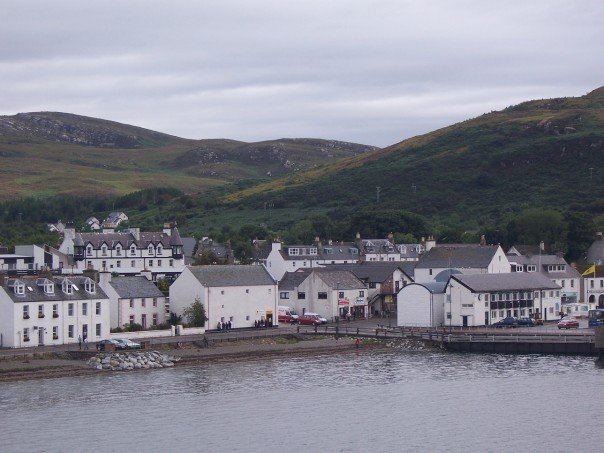|
Loch Glascarnoch
Loch Glascarnoch is a reservoir in the highlands of Scotland between Ullapool and Inverness. It is dammed on its eastern end. The reservoir was created in 1957 and forms part of the Conon Hydro-electric Power Scheme. The A835 The A835 is a road in the Scottish Highlands linking Inverness to Ullapool and the Far North of Scotland. Route The A835 starts at Tore on the Black Isle, seven miles north-west of Inverness at a junction with the A9. The A835 crosses the B ... runs along its southern edge, and the loch is a popular stop off point for motorists. In the summer of 2020, water levels in the reservoir receded to the extent that old croft houses and bridges that were submerged when the reservoir was flooded were revealed. References Reservoirs in Scotland Lochs of Highland (council area) {{Scotland-geo-stub ... [...More Info...] [...Related Items...] OR: [Wikipedia] [Google] [Baidu] |
Ullapool
Ullapool (; gd, Ulapul ) is a village and port located in Northern Scotland. Ullapool has a population of around 1,500 inhabitants. It is located around northwest of Inverness in Ross and Cromarty, Scottish Highlands. Despite its modest size, it is the largest settlement for many miles around, and an important port and tourist destination. The North Atlantic Drift passes Ullapool, moderating the temperature. A few ''Cordyline australis'' (New Zealand cabbage trees) are grown in the town and are often mistaken for palm trees. The town lies on Loch Broom, on the A835 road from Inverness. The Ullapool River flows through the village. History On the east shore of Loch Broom, Ullapool was founded in 1788 as a herring port by the British Fisheries Society. It was designed by Thomas Telford. Prior to 1788 the town was only an insignificant hamlet made up of just over 20 households. The harbour is used as a fishing port, yachting haven, and ferry port. Ferries sail to Stornoway in the ... [...More Info...] [...Related Items...] OR: [Wikipedia] [Google] [Baidu] |
Inverness
Inverness (; from the gd, Inbhir Nis , meaning "Mouth of the River Ness"; sco, Innerness) is a city in the Scottish Highlands. It is the administrative centre for The Highland Council and is regarded as the capital of the Highlands. Historically it served as the county town of the county of Inverness-shire. Inverness lies near two important battle sites: the 11th-century battle of Blàr nam Fèinne against Norway which took place on the Aird, and the 18th century Battle of Culloden which took place on Culloden Moor. It is the northernmost city in the United Kingdom and lies within the Great Glen (Gleann Mòr) at its northeastern extremity where the River Ness enters the Beauly Firth. At the latest, a settlement was established by the 6th century with the first royal charter being granted by Dabíd mac Maíl Choluim (King David I) in the 12th century. Inverness and Inverness-shire are closely linked to various influential clans, including Clan Mackintosh, Clan Fraser and Cl ... [...More Info...] [...Related Items...] OR: [Wikipedia] [Google] [Baidu] |
A835 Road
The A835 is a road in the Scottish Highlands linking Inverness to Ullapool and the Far North of Scotland. Route The A835 starts at Tore on the Black Isle, seven miles north-west of Inverness at a junction with the A9. The A835 crosses the Black Isle to Conon Bridge, where the A832 crosses, linking Muir of Ord to the west and Fortrose to the east, on the Moray Firth. From here the A835 follows the River Conon upstream through Contin, past Rogie Falls and Loch Garve to Garve Junction, where the A832 forks left through Strath Bran to Achnasheen. The A835 turns north through the Strathgarve and Garbat Forests, then turns again to the north-west and climbs to the Glascarnoch Dam of Loch Glascarnoch. The road then passes through Dirrie More, a high and wide mountain pass at 279m asl between Sgurr Mòr (Fannichs) and Beinn Dearg, before descending to Braemore Junction where the A832 returns after making a vast circuit around the mountains of Wester Ross and across to the west co ... [...More Info...] [...Related Items...] OR: [Wikipedia] [Google] [Baidu] |
Reservoirs In Scotland
A reservoir (; from French ''réservoir'' ) is an enlarged lake behind a dam. Such a dam may be either artificial, built to store fresh water or it may be a natural formation. Reservoirs can be created in a number of ways, including controlling a watercourse that drains an existing body of water, interrupting a watercourse to form an embayment within it, through excavation, or building any number of retaining walls or levees. In other contexts, "reservoirs" may refer to storage spaces for various fluids; they may hold liquids or gasses, including hydrocarbons. ''Tank reservoirs'' store these in ground-level, elevated, or buried tanks. Tank reservoirs for water are also called cisterns. Most underground reservoirs are used to store liquids, principally either water or petroleum. Types Dammed valleys Dammed reservoirs are artificial lakes created and controlled by a dam constructed across a valley, and rely on the natural topography to provide most of the basin of the ... [...More Info...] [...Related Items...] OR: [Wikipedia] [Google] [Baidu] |


